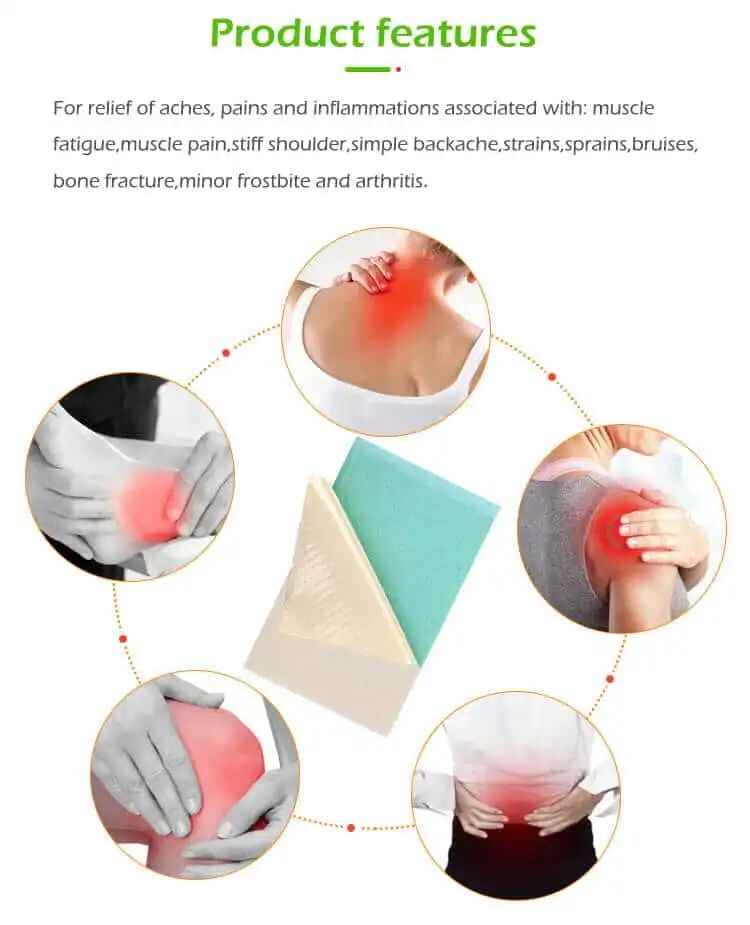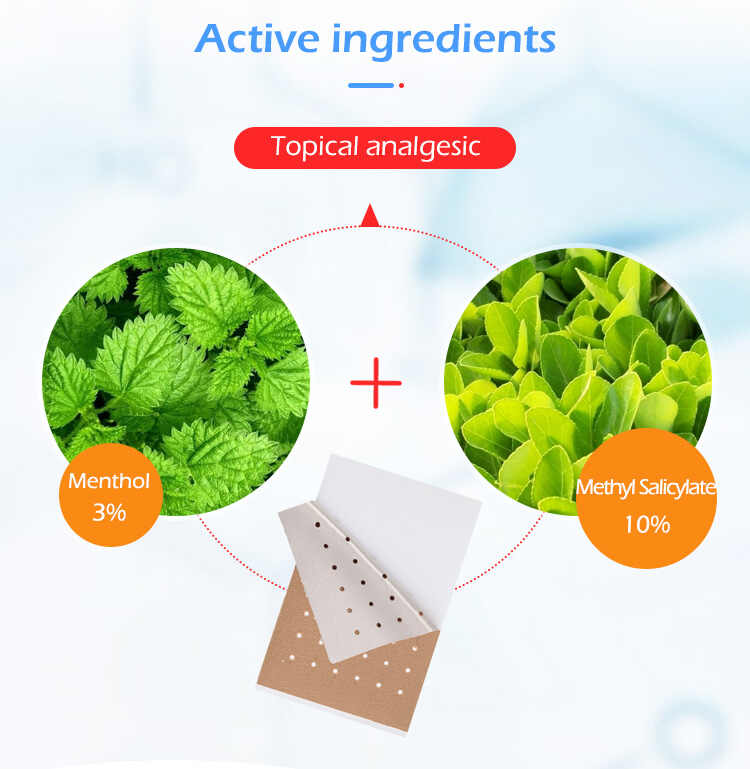Core Technologies and Processes in Chronic Pain Patches OEM Customization
As demand for non-invasive, long-lasting pain relief solutions rises globally, Chronic Pain Patches have emerged as a game-changer in the pharmaceutical and wellness industries. For brands entering this space, working with a Chronic Pain Patches OEM is a smart way to streamline production, leverage innovation, and maintain compliance with health regulations. However, what truly sets one Chronic Pain Patches Manufacturer apart from another is the depth of their core technologies and the precision of their customization processes.

In this comprehensive guide, we explore the cutting-edge technologies and customization processes that high-quality Chronic Pain Patches Suppliers utilize to deliver effective, compliant, and market-ready Custom Chronic Pain Patches and Private Label Chronic Pain Patches.
1. Introduction to OEM Customization for Chronic Pain Patches
OEM (Original Equipment Manufacturer) customization refers to the process of tailoring a product’s formulation, structure, and packaging based on a client’s brand, target market, and regulatory requirements. In the case of Chronic Pain Patches, OEMs not only manufacture the products but also support:
Ingredient selection
Patch delivery system engineering
Design and packaging
Compliance documentation
Private labeling
A reliable Chronic Pain Patches OEM offers both flexibility and innovation through proprietary technologies, proven production methods, and strict quality assurance protocols.
2. Key Technologies in Chronic Pain Patches OEM Manufacturing
a. Transdermal Drug Delivery Systems (TDDS)
The heart of any Chronic Pain Patch is its ability to deliver active ingredients through the skin and into the bloodstream or local tissue. TDDS technology enables:
Controlled release of medication over 8–72 hours
Non-invasive pain management
Bypassing of the gastrointestinal tract, reducing systemic side effects
There are multiple TDDS systems used by leading Chronic Pain Patches Manufacturers, including:
Matrix-type patches: Drug is embedded in the adhesive layer
Reservoir-type patches: Drug is stored in a separate layer and delivered via a membrane
Multilaminate systems: Combine both for extended control and efficiency
b. Micro-Encapsulation and Nanotechnology
Advanced Chronic Pain Patches OEM partners incorporate micro-encapsulation to:
Improve ingredient stability
Enable sustained release of medication
Minimize skin irritation
Some also use nanotechnology to enhance skin penetration for active compounds like menthol, lidocaine, CBD, and capsaicin.
c. Adhesive Technology
Adhesion plays a critical role in user experience. Top Chronic Pain Patches Suppliers use adhesives that are:
Skin-safe and hypoallergenic
Water-resistant or breathable, depending on application
Flexible for joint areas
Sophisticated adhesive systems ensure that the patch stays in place while maintaining user comfort.
d. Herbal Integration and Botanical Technology
For Custom Chronic Pain Patches, many brands now prefer natural formulations. OEMs with botanical expertise can integrate:
Traditional Chinese Medicine (TCM) herbs
Ayurvedic plant extracts
Organic essential oils
An experienced Chronic Pain Patches Manufacturer will be able to process and stabilize these herbs effectively without compromising efficacy.
e. Thermo-Responsive and Hydrogel Technologies
Hydrogels are increasingly used in Private Label Chronic Pain Patches due to their cooling effect, moisture retention, and ease of use. Meanwhile, thermo-responsive polymers adapt to body temperature and release active ingredients more effectively.
Hydrogel patches are particularly favored for:
Chronic lower back pain
Arthritis and joint pain
Muscle fatigue in athletes
3. The Customization Process in Chronic Pain Patches OEM
The customization of Chronic Pain Patches involves several coordinated steps between the brand owner and the OEM manufacturer:
a. Client Needs Assessment
A qualified Chronic Pain Patches Supplier starts by understanding:
Target audience (e.g., elderly, athletes, office workers)
Desired active ingredients and patch duration
Regulatory region (USA, EU, Middle East, etc.)
Branding and packaging vision
b. Formulation Development
R&D teams at the Chronic Pain Patches Manufacturer formulate blends tailored to:
Specific pain conditions (muscle, joint, neuropathic)
Active ingredient preferences (chemical, herbal, CBD, etc.)
Regulatory safety thresholds
This is the phase where Custom Chronic Pain Patches are truly born.
c. Prototype Creation and Testing
Once a formulation is approved, the OEM creates a prototype for:
Adhesion testing
Wearability trials
Efficacy assessment
Stability and shelf-life testing
Some advanced OEMs also use in vitro skin permeation testing to simulate how well the patch delivers the drug.
d. Regulatory Support and Documentation
High-quality OEMs ensure that Private Label Chronic Pain Patches meet:
FDA or CE regulations
ISO 13485 manufacturing standards
MSDS and COA documentation
Claims and label compliance (e.g., “non-irritating”, “long-lasting relief”)
This is especially crucial for pain patches that contain active pharmaceuticals or herbal remedies subject to local health authority rules.
e. Packaging and Branding
Packaging must balance regulatory requirements with brand aesthetics. A full-service Chronic Pain Patches OEM will help with:
Package engineering (barriers for moisture and UV)
Graphic design and compliance
Multilingual labeling
Eco-conscious packaging materials
OEMs offering Private Label Chronic Pain Patches often provide low MOQ packaging options to support startups.
f. Mass Production and Quality Control
Before scaling up, OEMs typically conduct pilot runs to fine-tune:
Production speed and consistency
Adhesion quality
Ingredient dispersal
Defect rates
Quality control includes:
Visual inspection
Microbiological testing
Active ingredient concentration validation
Adhesion strength analysis
4. Benefits of Working with a High-Tech Chronic Pain Patches OEM
Partnering with a technologically advanced Chronic Pain Patches Manufacturer offers several advantages:
Speed to market: Reduced R&D and production times
Cost efficiency: Shared infrastructure and bulk material sourcing
Regulatory ease: Expert guidance on compliance and documentation
Brand differentiation: Unique Custom Chronic Pain Patches with tailored effects
Scalability: Ability to grow with demand without compromising quality
5. Choosing the Right OEM Partner for Custom Chronic Pain Patches
When selecting a Chronic Pain Patches Supplier, prioritize:
Experience: Years of expertise in pain management patches
Technology stack: Availability of advanced TDDS, hydrogels, microencapsulation
Customization flexibility: Both herbal and chemical options
Regulatory support: For global distribution
Transparency: Willingness to share test data, facility tours, certifications
A truly reliable Chronic Pain Patches OEM is more than a manufacturer—they are a strategic partner in your brand’s long-term success.
Conclusion
The customization of Chronic Pain Patches through a competent OEM involves much more than just slapping a label on a generic product. It requires deep expertise in drug delivery, skin science, formulation chemistry, and packaging compliance. Whether you're building a new brand or expanding an existing one, working with a Chronic Pain Patches Manufacturer who offers advanced technologies and rigorous processes is essential.
Investing in a reliable Chronic Pain Patches OEM not only ensures a high-quality product but also positions your brand as trustworthy, effective, and innovative in a fast-growing health market.
Related Questions and Short Answers
Q1: What makes a Chronic Pain Patches OEM different from a regular manufacturer?
A: An OEM provides custom formulations, regulatory support, and private label options, while regular manufacturers usually offer fixed, off-the-shelf products.
Q2: Can a Chronic Pain Patches Supplier help me create herbal patches?
A: Yes, many advanced suppliers specialize in botanical and natural formulations, especially those with Traditional Chinese Medicine (TCM) or Ayurvedic experience.
Q3: What ingredients are commonly used in Custom Chronic Pain Patches?
A: Common actives include menthol, lidocaine, capsaicin, salicylates, CBD, and various herbal extracts.
Q4: How long does it take to develop a Private Label Chronic Pain Patch?
A: Private label patches may be ready in 4–8 weeks, while custom formulations may require 2–6 months including testing and approvals.
Q5: What is the advantage of hydrogel-based Chronic Pain Patches?
A: Hydrogels are cooling, non-greasy, and offer excellent skin adhesion and moisture retention, enhancing user comfort.
Q6: Do OEMs handle product registration with health authorities?
A: Yes, most high-quality Chronic Pain Patches OEMs assist with regulatory submissions and can provide all required documentation.
Q7: Can I order a small batch of Custom Chronic Pain Patches to test the market?
A: Many OEMs now offer low MOQs for initial product launches or pilot campaigns.






